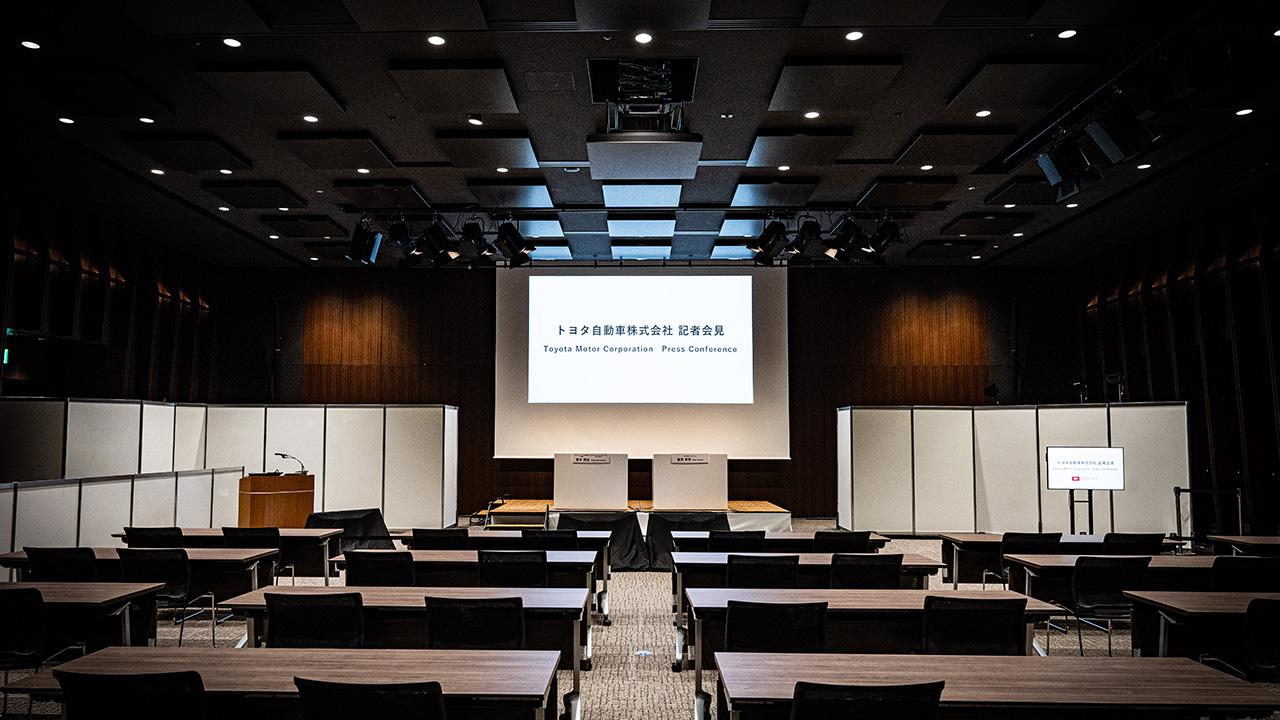
This article presents the full text of Chairman Akio Toyoda's press conference message and the detailed explanation by Customer First Promotion Group Chief Officer Shinji Miyamoto.
Chief Officer Miyamoto – Explanation of the identified 6 cases (7 models)
Chief Officer Miyamoto
First, we believe that certification is the bare minimum and most important process for mass-producing and selling cars to customers and ensuring that they can be used safely and securely.
Broadly, there are three ways of conducting certification.
The first is to have an examiner from a designated technical service witness the test. The second is for the automaker to carry out the in-house certification test themselves and submit the data. The third is to submit the compatible development test data for certification.
This time, cases were found in the second and third ways.
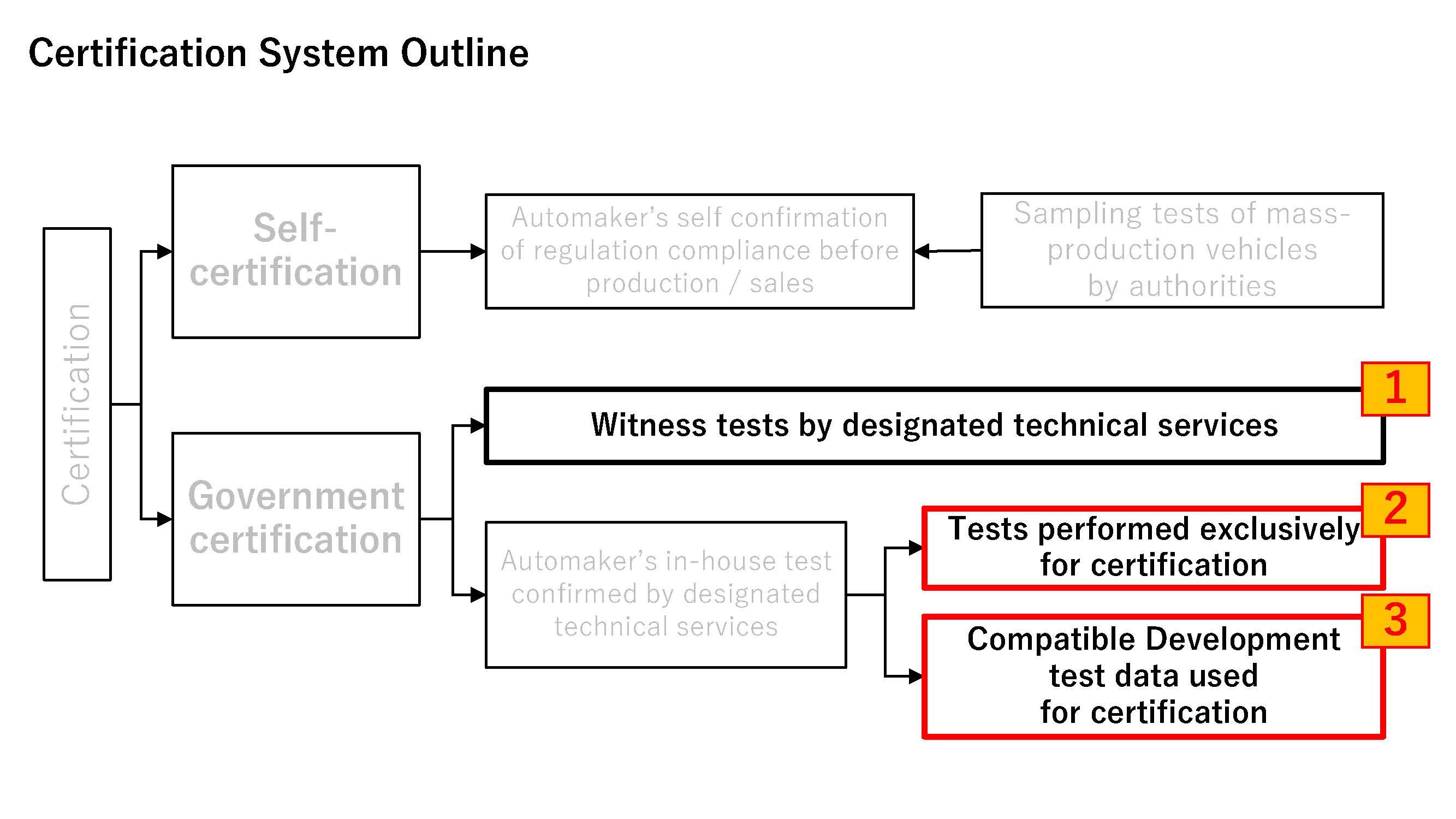
Among them, we have found six specific cases. This is the list of six cases.
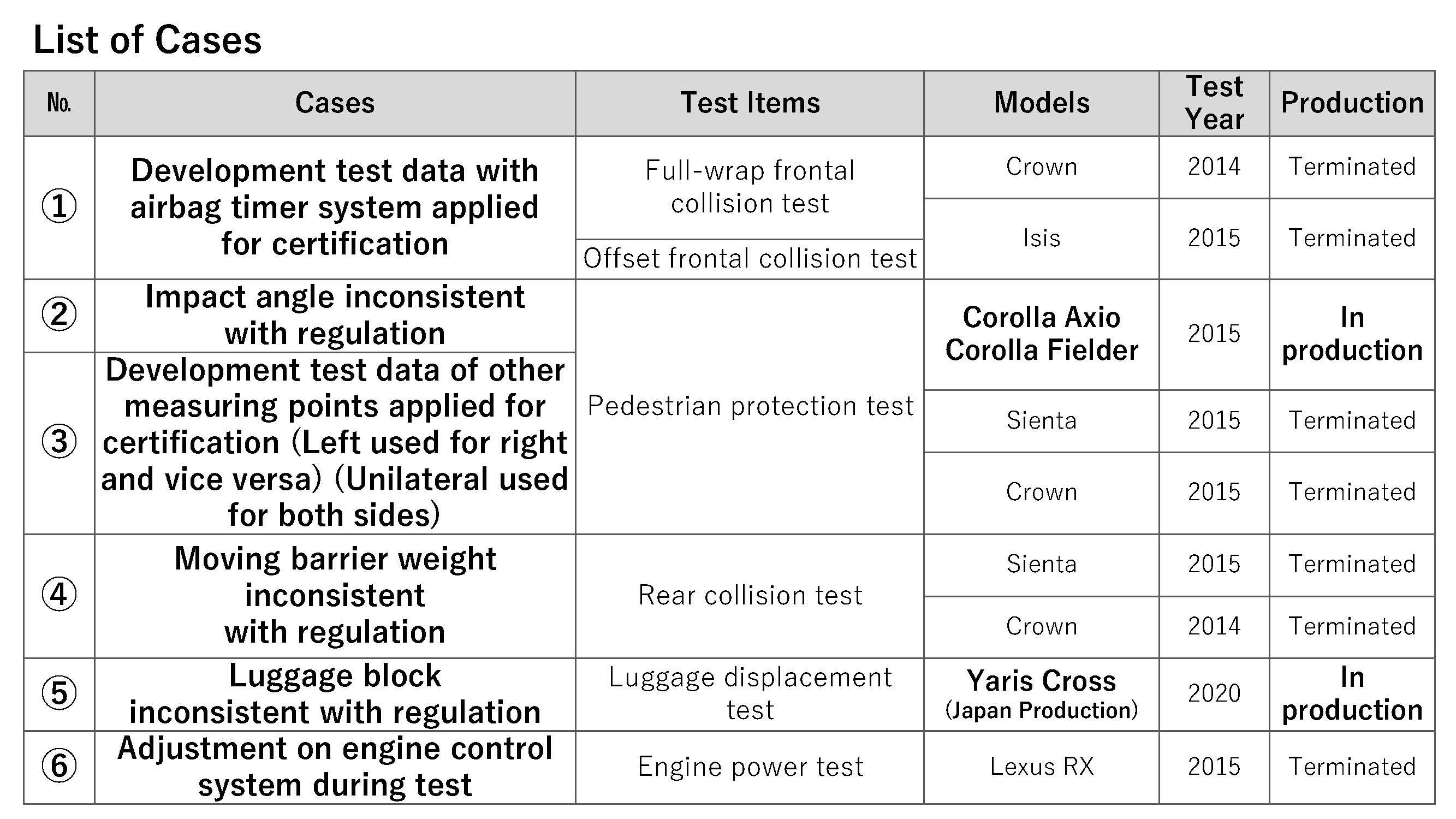
This is the first case. During the partial redesign of the Crown and Isis in 2014 and 2015, airbag timer ignition development test data was used for certification application.
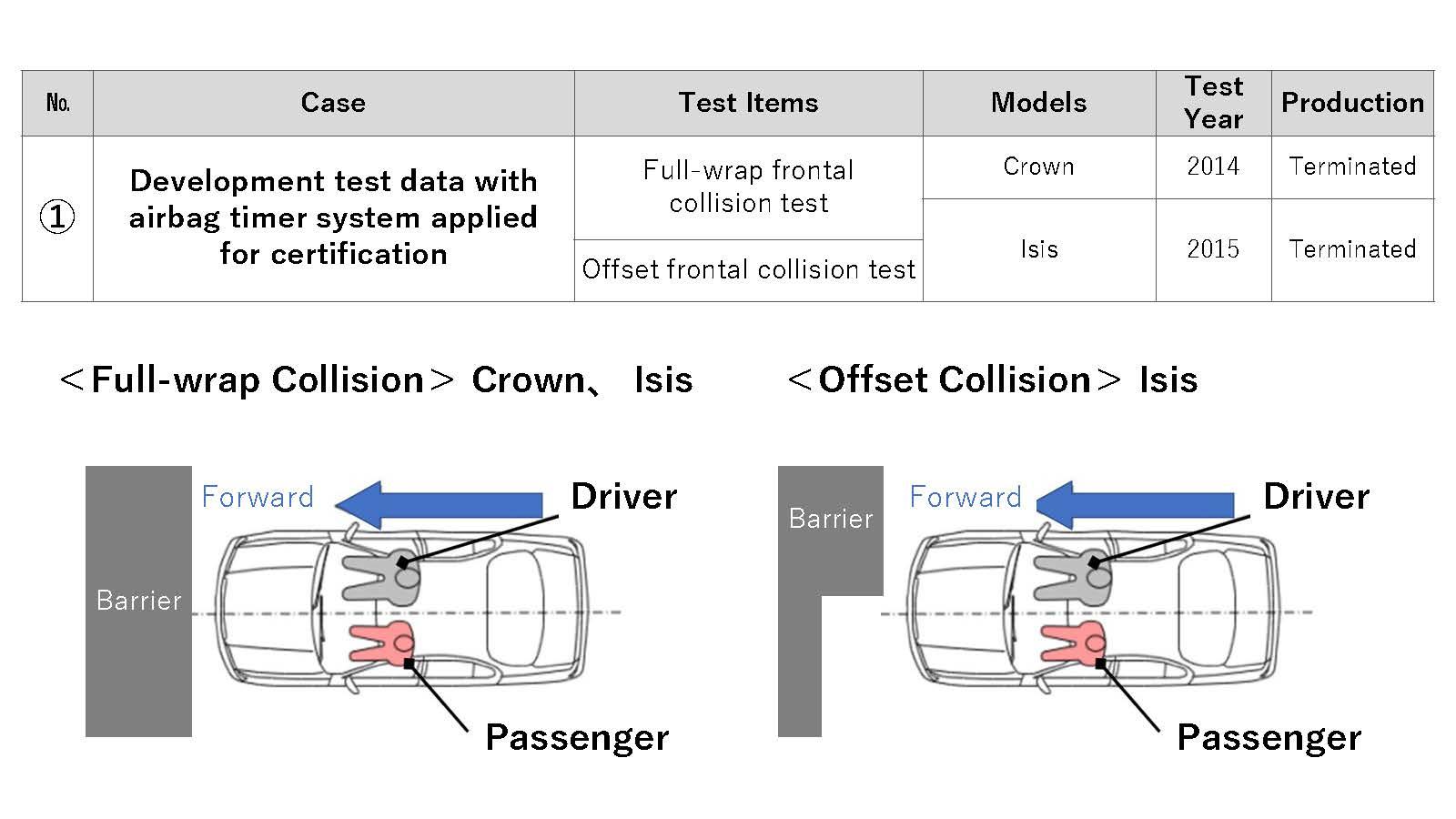
When a collision occurs, occupants are protected primarily by seat belts and airbags. In the case of Isis, we were working on seat belt development to improve its performance.
In this development test, a timer ignition method was used to create more severe collision conditions than those in the certification test.
In addition, additional model development was being done for the Crown.
The purpose of this development test was to confirm the occupant protection performance of seat belts and airbags. A timer ignition method was used to ensure the deployment of the airbags in the test prototype.
The performance of automatic airbag ignition had already been verified in an existing model.
In both cases, a certification test should have been conducted again under conditions as close as possible to what would be delivered to the customer, and such data should have been submitted.
However, the development test data was used for certification.
Next, the second case. In 2015, during the development of the Corolla, a test was conducted to check the damage to a pedestrian's head in a collision.
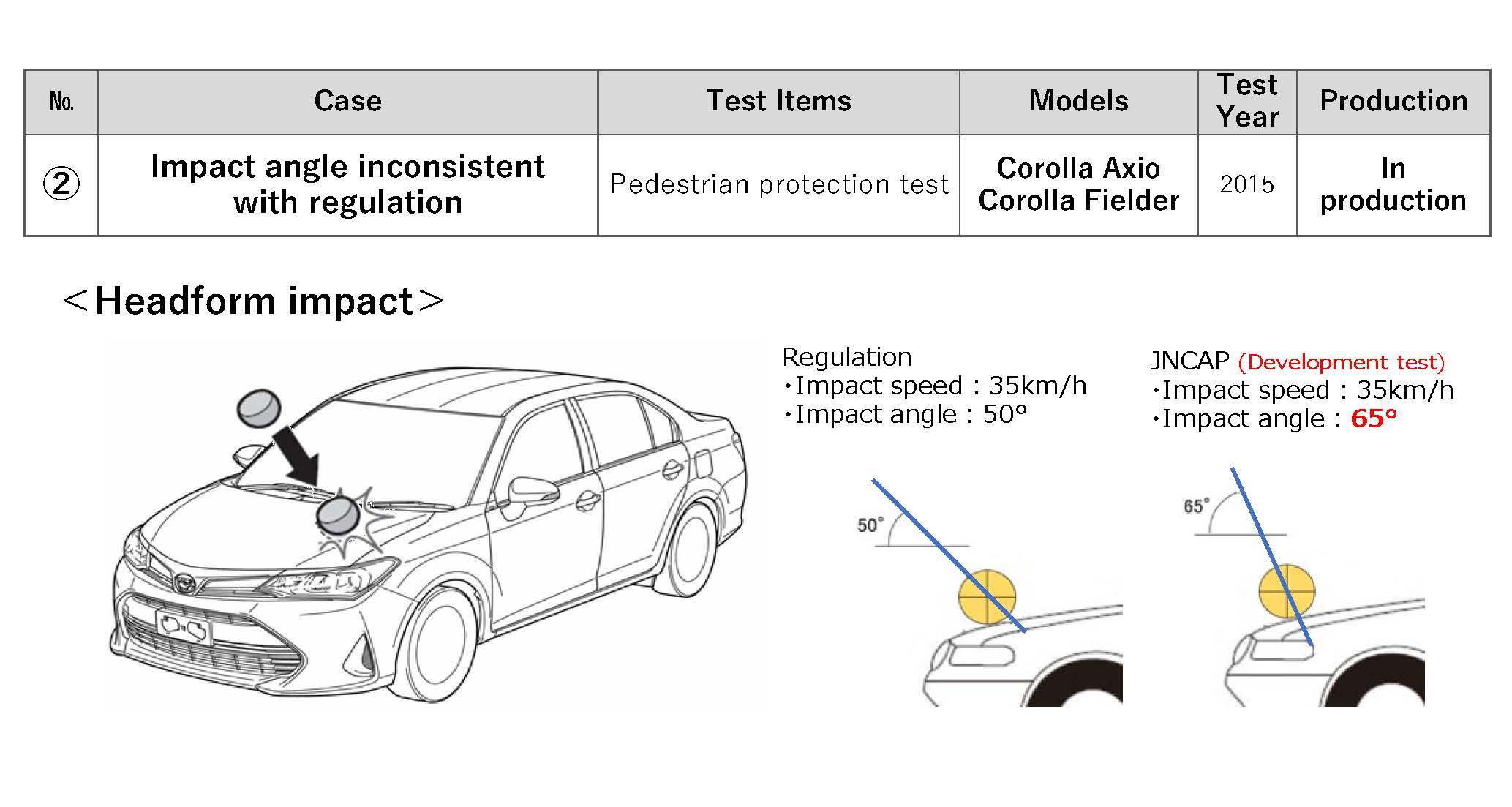
Development test data under more severe test conditions were used for certification.
As shown in the figure, the impact angle of 65 degrees is a more severe test condition.
The test should have been conducted again with the 50-degree impact angle stipulated by regulations, and this data should have been submitted for certification.
However, the development test data was used for certification.
Next, the third case. In 2015, during the development of the Corolla, Sienta, and Crown, a test was conducted to check the damage to a pedestrian's head and legs in a collision.
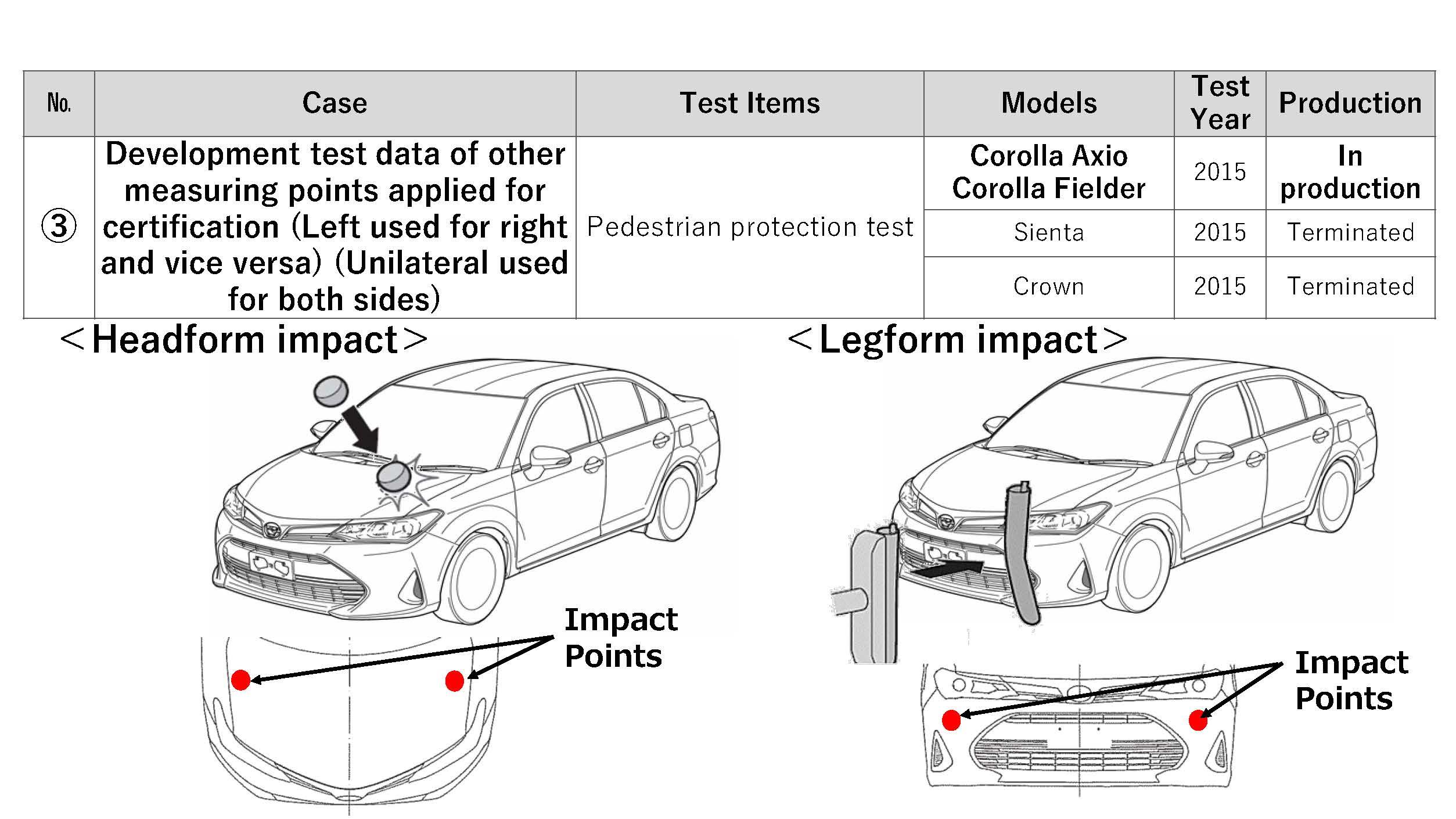
The data of the opposite side of the applied measuring points was used for certification, and unilateral point data was used for both sides in certification.
It was confirmed that the test results for the left and right points of the vehicle show no difference.
The test should have been conducted again with the selected measuring points, and this data should have been submitted.
There is a process for applying for and obtaining an agreement in advance to determine the measuring points. However, we believe that there was insufficient communication with the technical service about the change of measuring points during the structural changes and the technical verification process during development.
Next, the fourth case. This is a test to confirm fuel leakage and other issues due to the impact of a rear-end collision during the development of the Crown in 2014 and the Sienta in 2015.
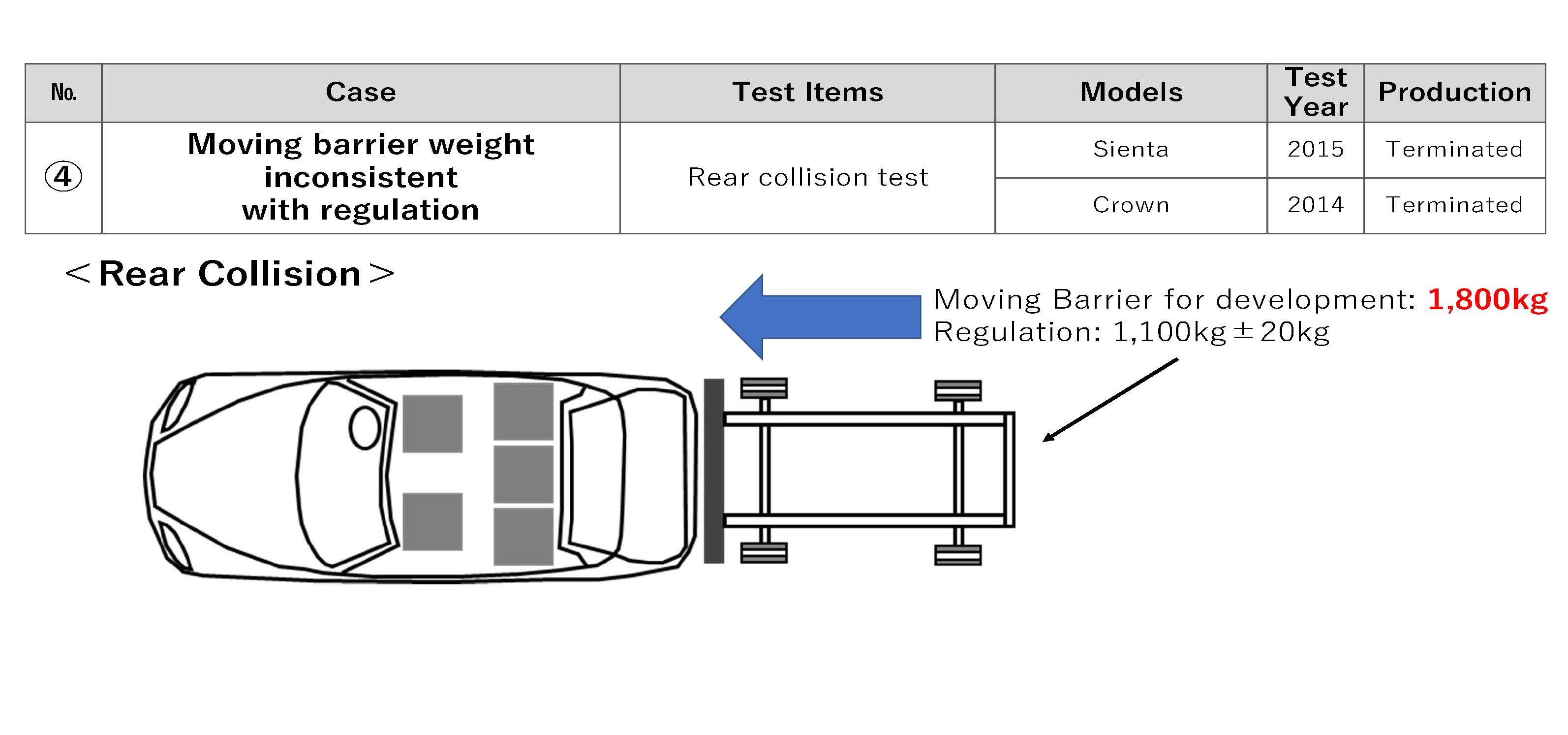
The development test data under more severe test conditions with a moving barrier was used for certification.
A 1,800 kg moving barrier was used for the development test, which is heavier than the regulation standard of 1,100 kg; therefore, the test had a greater impact.
The test should have been done again using the 1,100 kg moving barrier stipulated by regulations, and this data should have been submitted.
Next, the fifth case. During the development of the Yaris Cross in 2020, a test was carried out to examine the damage caused to the rear seat when luggage placed in the rear space of the vehicle moves due to the impact of a collision.
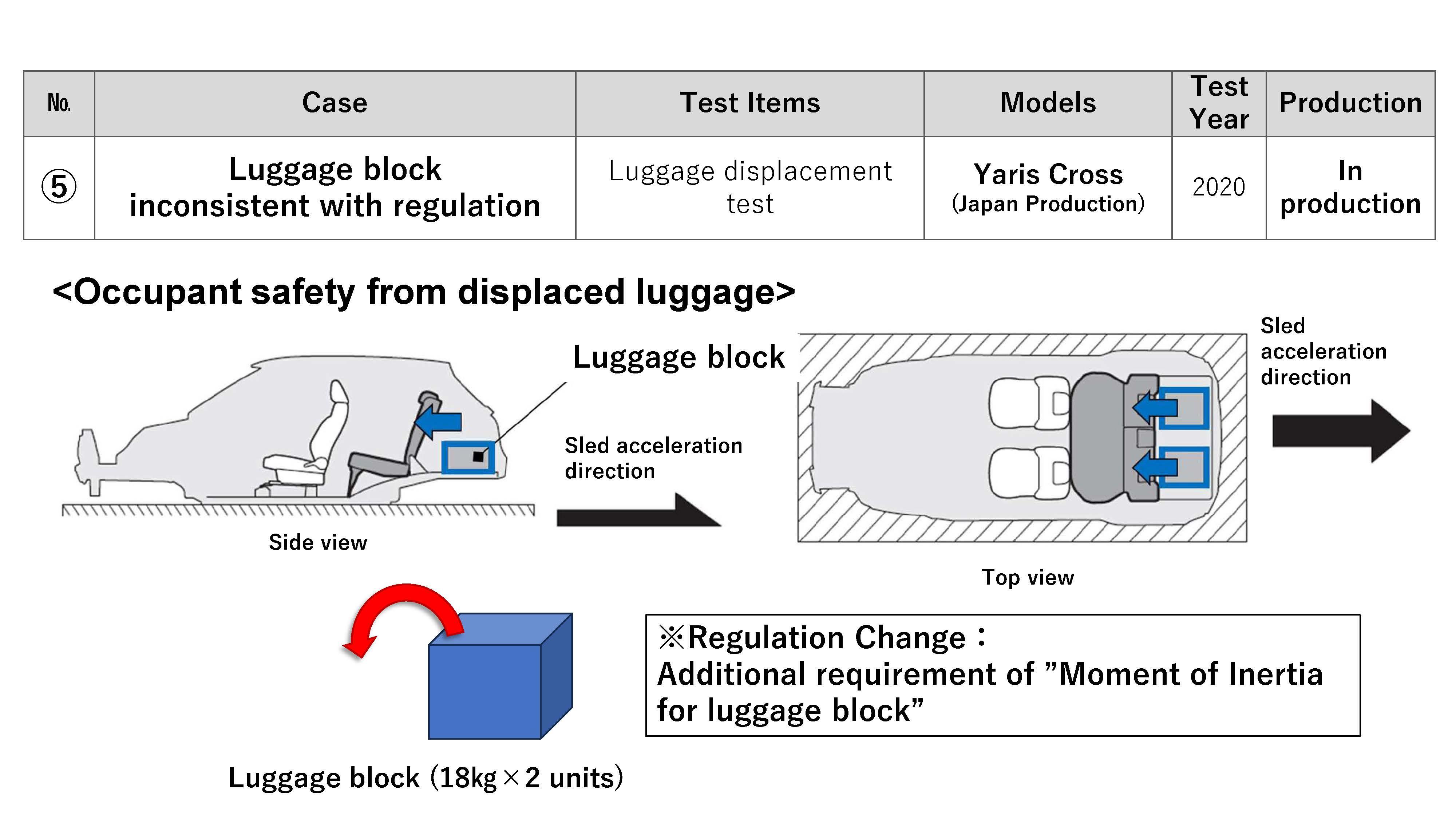
After regulation changes, there was an additional requirement for luggage blocks.
However, the development test data using the old blocks was submitted for certification application. The test should have been done again using the new blocks, and that data should have been submitted.
Lastly, the sixth case. During the development of the Lexus RX engine in 2015, a certification test was conducted to check the engine power.
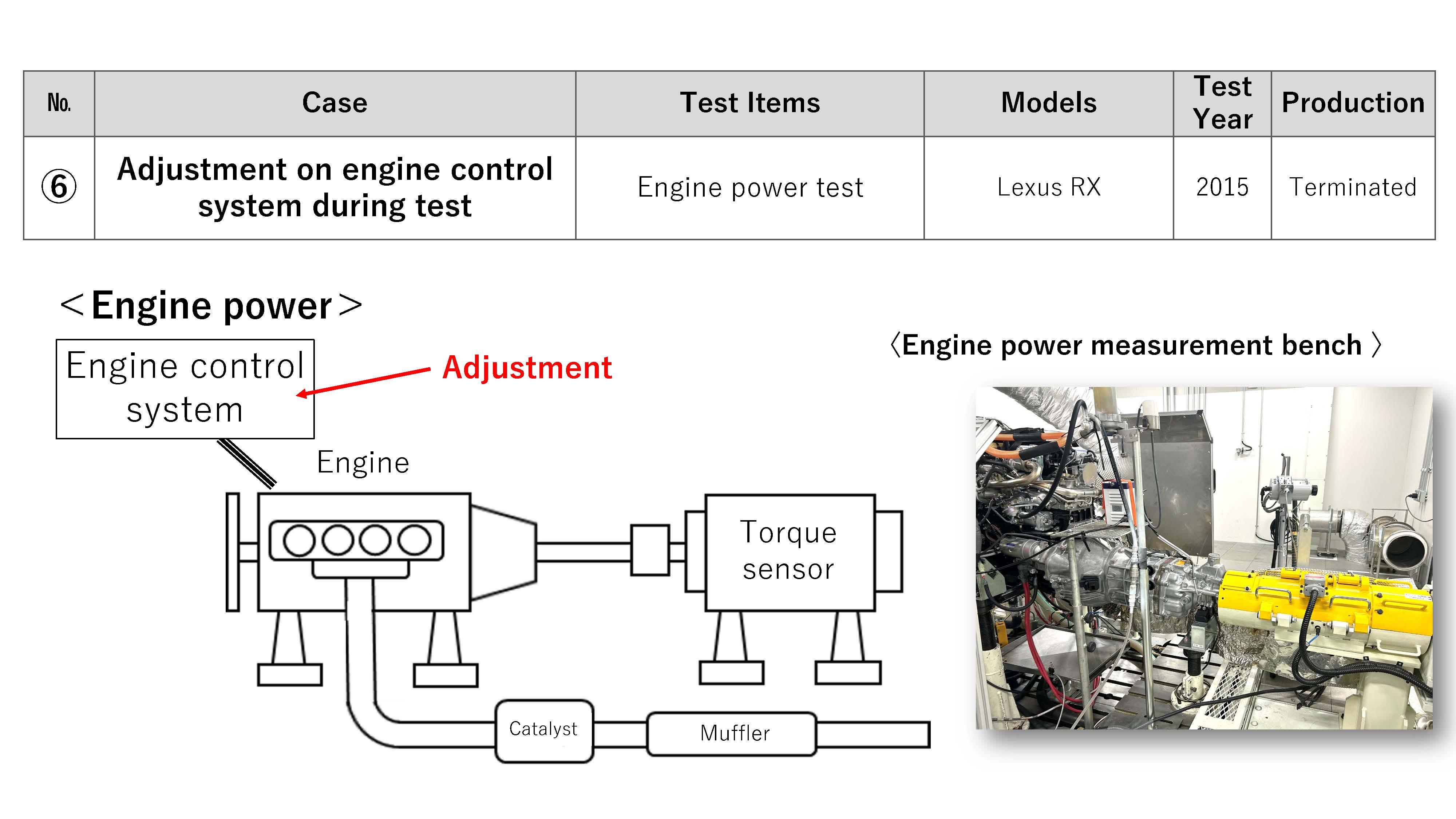
In this test, the targeted power could not be achieved.
When a problem like this occurs, the test should have been stopped, the cause investigated, and measures taken. However, the engine control system was adjusted to achieve the targeted power, and the re-tested data was used for certification.
This case is different in nature from cases (1) to (5) in that the results were changed to meet the standards.
A subsequent investigation has determined that the cause is the partial collapse of the test muffler.
The six cases explained can be grouped as: Cases (1) to (5) involve development test data applied for certification, and case (6) involves the automaker conducting its own certification test and submitting that data.
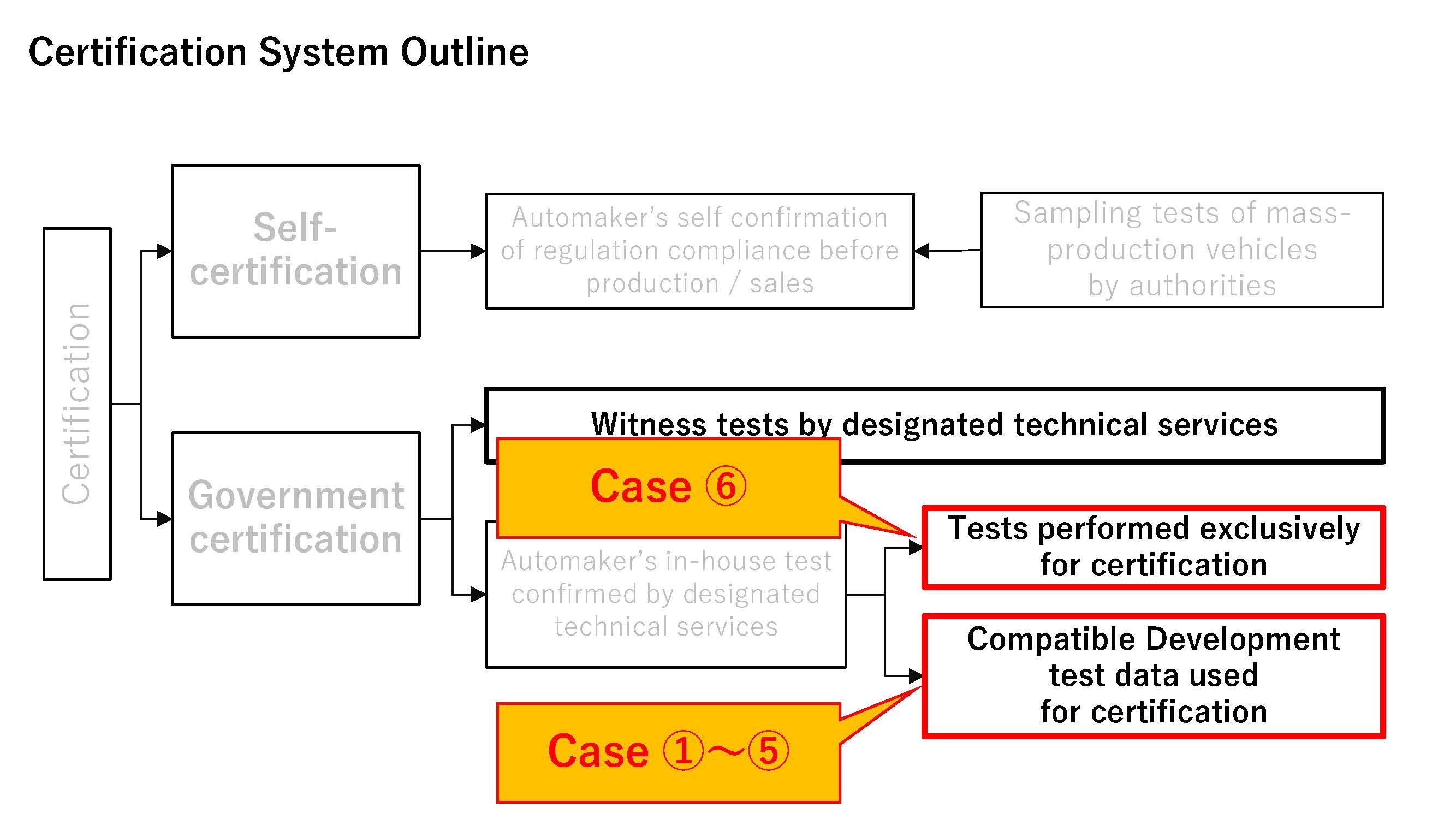
In terms of the scale involved in the certifications explained today, we certify about 50 models per year and submit about 7,000 reports over 10 years.
The content of one report, for example, in the case of pedestrian protection, includes the results of numerous point collision tests and the results of tests on the left and right sides of the bumper.
We do not have the total number of test results at this time, but we have reviewed tens of thousands of test results. Although we are still in the process of reviewing them, we have reported on six cases today.

